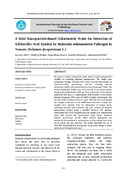| dc.description.abstract | Excluding large native mammals is an inverse test of rewilding. A 25-year exclosure experiment in an African savanna rangeland offers insight into the potentials and pitfalls of the rewilding endeavor as they relate to the native plant community. A broad theme that has emerged from this research is that entire plant communities, as well as individual plants, adjust to the absence of herbivores in ways that can ill-prepare them for the return of these herbivores. Three lines of evidence suggest that these “naïve” individuals, populations, and communities are likely to initially suffer from herbivore rewilding. First, plots protected from wild herbivores for the past 25 years have developed rich diversity of woody plants that are absent from unfenced plots, and presumably would disappear upon rewilding. Second, individuals of the dominant tree in this system, Acacia drepanolobium, greatly reduce their defences in the absence of browsers, and the sudden arrival of these herbivores (in this case, through a temporary fence break), resulted in far greater elephant damage than for their conspecifics in adjacent plots that had been continually exposed to herbivory. Third, the removal of herbivores favoured the most palatable grass species, and a large number of rarer species, which presumably would be at risk from herbivore re-introduction. In summary, the native communities that we observe in defaunated landscapes may be very different from their pre-defaunation states, and we are likely to see some large changes to these plant communities upon rewilding with large herbivores, including potential reductions in plant diversity. Lastly, our experimental manipulation of cattle represents an additional test of the role of livestock in rewilding. Cattle are in many ways ecologically dissimilar to wildlife (in particular their greater densities), but in other ways they may serve as ecological surrogates for wildlife, which could buffer ecosystems from some of the ecological costs of rewilding. More fundamentally, African savannah ecosystems represent a challenge to traditional Western definitions of “wilderness” as ecosystems free of human impacts. We support the suggestion that as we “rewild” our biodiversity landscapes, we redefine “wildness” in the 21st Century to be inclusive of (low impact, and sometimes traditional) human practices that are compatible with the sustainability of native (and re-introduced) biodiversity. | en_US |
